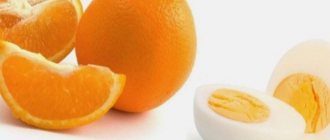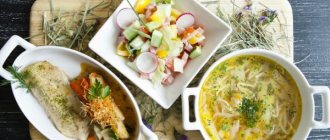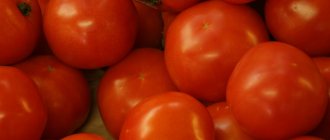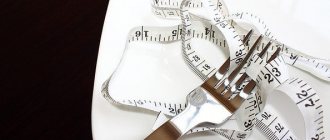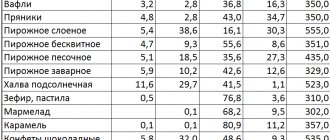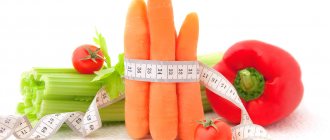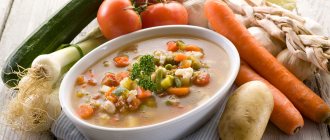A unique impulse diet was developed by professional nutritionist Mikhail Ginzburg. A diet that makes it possible to achieve a 10% reduction in body weight in just one month.
The main feature that distinguishes the Ginzburg pulse diet from other weight loss programs is that this course provides for eating familiar foods at quite affordable prices. Many diets, in turn, include in their menu many exotic products and difficult-to-prepare dishes, which makes it quite difficult to follow the course, because we do not always have enough time and money to strictly follow all the rules of a particular diet. power systems.
The only downside to the pulse diet is that you have to learn how to cook food without using fat. But you can follow this course for a long time and use it even during pregnancy and breastfeeding.
General rules
Among low-fat diets for weight correction, the low-fat pulse diet of Mikhail Ginzburg occupies a special place. Like all diets of this type, it is based on the quantitative and qualitative correction of the fat component in the diet and is aimed at stimulating the use of one’s own fat reserves in the metabolic .
According to the author, the fat content in the diet should not exceed 40-45 g per day and this is quite enough for “gentle” weight loss and maintaining health. The main strategic goal for losing weight, says nutritionist Mikhail Ginzburg, is to saturate the diet with low-fat foods, and fat-rich and intermediate foods can be used periodically (as needed) in order to obtain maximum pleasure from the nutrition process and comfortable weight loss. The basis of M. Ginzburg’s author’s diet is the principle of phase metabolism in the body. In some phases, the processes of fat breakdown predominate, respectively, during such periods it is easy to lose weight and diet, while in others, the processes of fat accumulation predominate, respectively, during such periods it is preferable to direct efforts to maintain body weight. Understanding the patterns of phase alternation makes it much easier to solve the problem of losing weight. Therefore, the author suggests having two diets in your arsenal, one of which will promote fat consumption and weight loss, and the other will help maintain weight. It is the reasonable alternation of these two diets that will lead to success much more quickly and effectively than adherence to forced semi-starvation nutrition with a feeling of constant discomfort.
Also, according to the author, fat mass increases when a person is in a state of physical/mental rest and naturally the appetite increases and the function of fat accumulation is activated. Accordingly, any physical and psycho-emotional movement prevents the natural increase in fat mass and contributes to its reduction.
This approach to the situation with excess weight allowed the author to find a fundamentally new and effective solution to the problem of excess weight. Various power modes are used:
The first is the stage of low-fat nutrition . The basis of the diet is lean red meat and poultry (rabbit), fish, complex carbohydrates (cereal/rye bread, cereals, baked potatoes, durum wheat pasta) - 2 servings per day of your choice, low-fat dairy products, vegetables, fruits . The following sweets are allowed: marmalade, marshmallows, marshmallows, sugar, honey (up to 30 g per day). 2 dessert spoons of cold-pressed olive oil are allowed.
Animal fats and mayonnaise are excluded from the diet, and the consumption of confectionery, baked goods, semi-finished products, fast food products and all refined products is gradually reduced to zero. To prevent a deficiency of essential polyunsaturated fatty acids, it is recommended to include sea fish in your diet or take a teaspoon of high-quality fish oil.
Products must be boiled and baked; frying with oil is prohibited. When preparing meat products, it is necessary to first remove fat and extractive substances from them, which is achieved by boiling them followed by baking/stewing. There are no strict prohibitions on including any foods in the diet.
In fact, this stage is necessary for the body to adapt to a different diet, and as appetite decreases and the body is prepared for the change, they gradually move on to intensive weight loss. With the right approach, even at this stage it is possible to achieve weight loss. At this stage, the author also recommends normalizing sleep and introducing healthy walking (walking) or other motor modes (biking, swimming).
The next stage of the impulse diet is an intensive (fasting) diet , which is based on a reduction in calorie intake, which triggers the process of spending fat reserves. At the same time, the most important condition for this stage of nutrition is to minimize discomfort and suffering. The author solves this problem by using dietary modifiers (weight loss cocktails from the Doctor Slim series).
Such cocktails have an effect called “maximum satiety with a minimum of calories.” That is, the satiety of these cocktails is significantly higher than their calorie content, which is 40-45 kilocalories. Their consumption 10-15 minutes before a meal allows you to reduce the calorie content of the subsequent meal by 35-40% by achieving a feeling of fullness with less food and easier control over the amount of your food.
This effect is formed due to the relief/reduction of the feeling of hunger by the presence in their composition of all the main food macro/micronutrients, which prevents the slowdown of metabolic processes and the occurrence of hunger. In addition to taking cocktails before meals, they are taken 1-2 servings as snacks between main meals, as well as at night.
Nutrition during this period should, if possible, limit fats (up to 35-40 g/day) and simple carbohydrates. Mucofalk containing 10 grams of dietary fiber in the diet Meals should be frequent (up to 6 times a day), and portion sizes should be reduced.
The gradual introduction of restrictions is extremely important. It is necessary to build a fasting regime in such a way that physical and mental performance does not decrease and the quality of life does not suffer, and weight loss occurs against the background of satisfactory nutritional comfort.
Non-unloading (maintenance) diet . A distinctive feature of this diet is fasting days on the background of a low-fat diet. The frequency of fasting days is 1-2 times a week. The fasting day menu is extremely simple: 3 servings of 300 g of vegetables and fruits and 2-4 Doctor Slim cocktails. The cocktail can be replaced with a shake (curd and fruit mixture) made independently. Water and other drinks (without sugar) must be taken in an amount of at least 1.5 l/day and at any stage of the impulse diet.
Mikhail Ginzburg's weight loss strategy involves a reasonable alternation of fasting and non-fasting diets. You should lose weight (unloading mode) when you have the appropriate psychological attitude and desire. If it is absent or there are problems, it is recommended to follow a non-unloading regime (strive only to maintain the result obtained). It is also necessary to switch to this diet when, at the stage of intensive fasting, body weight stops decreasing. This phenomenon is called a “plateau” and is due to the body’s natural ability to adapt to low-calorie fasting diets (stress). And after rest, which includes a non-fasting diet, the ability to lose weight is usually restored.
Also, another way to overcome a plateau is increased physical activity (sports training). Such nutrition provides, although slow, but stable weight loss with minimal risk of weight gain.
After achieving weight loss goals, the emphasis should shift to maintaining the results obtained. This requires constant weight monitoring. In most cases, a non-fasting diet and no reduction in physical activity are sufficient to maintain weight. The bonus for this will be health, lightness, beauty and good mood!
Nutritionist Mikhail Ginzburg: The diet should be appetizing
Psychotherapist and Doctor of Medical Sciences, scientific editor of a popular glossy publication about weight loss, famous nutritionist Mikhail Ginzburg is also the author of a number of books dedicated to getting rid of excess weight and it seems that he already knows everything about the problems of losing weight and diets. What does Mikhail Ginzburg advise those losing weight, what type of diet is recommended by the doctor for those who cannot cope with excess weight, how to lose weight with pleasure - the doctor is ready to give comprehensive answers to all these and other questions.
Nutritionist Mikhail Ginzburg about diets and mood
In his numerous publications and books, nutritionist Mikhail Ginzburg never tires of repeating to those whose thoughts are completely occupied with losing weight and fighting the hated kilograms that you need to lose weight with appetite and without stress. A person’s nutrition is inextricably linked with his psycho-emotional background. Therefore, the problem of excess weight and eating disorder are also closely related to the emotional sphere, mood, and desires of a person.
To really start losing weight, you must first find a powerful motive. For some, such an incentive may be the preservation and restoration of health, for others it may be the desire to become pregnant and bear a child, for others it may be intense love. And only with a motive should you begin to choose a suitable weight loss program.
How to choose the right diet
The impulse diet developed by Mikhail Ginzburg has already found many of its adherents. But those who are in search will need advice on choosing the appropriate weight loss method.
The recommendation is that the program chosen for weight loss should not cause negative emotions.
It should provide an opportunity to take a creative approach to compiling a daily diet, to cook for yourself in a way that is not only low in calories and healthy, but also tasty.
When choosing a suitable diet, preference should be given to the system in which there are a minimum of prohibitions and restrictions, which allows you to eat almost everything, but in small portions. Such systems include the striped diet with kefir, the 5 tablespoons diet, and the low-calorie French diet for weight loss.
According to nutritionist Mikhail Ginzburg, diet plans with such loyal requirements reduce stress levels both before and during the diet.
In the end, the most effective diet will be the one that will evoke joyful feelings, anticipation of the result, will allow you to turn on your imagination and will not allow mood swings and attacks of hunger.
Why are mono-diets bad?
To lose weight, nutritionist Mikhail Ginzburg does not recommend choosing long-term and strict mono-diets. Firstly, after some time they will stop producing results. Secondly, mononutrition is not only severe stress, but also a severe blow to all systems of the body.
Thirdly, the strict restrictions that such weight loss programs impose are fraught with systematic uncontrolled overeating later. And, fourthly, as medical practice shows, 95% of those losing weight cannot withstand such a strict diet.
Not being a nutritionist, Anastasia Volochkova also came to the same conclusions - the star’s diet completely excludes long-term mono-weight loss programs.
Mono-diets also have one more significant drawback. Breaking away from such a weight loss scheme, a person begins to blame himself for weakness and lack of will, gives up and eventually comes to terms with being overweight.
And this contributes to low self-esteem and the accumulation of negativity, which only moves away from the goal. Few people behave correctly after breakdowns, soberly assessing the mistakes they have made: choosing a diet that is too poor, sharply reducing their diet.
And after that he tries to find a different approach.
How to go on a diet correctly
It is no secret that most people make some radical decisions, tying their implementation to certain dates (lose weight by the New Year, eat less on Monday, the first of a month, eliminate sweets after your birthday).
With this approach, nutritionist Mikhail Ginzburg recommends being careful. As his medical practice shows, 98% of those who wished to start a new life from a certain date will, until the last day, not deny themselves fatty foods, high-calorie foods, fried foods, or smoked foods.
A person will justify all these excesses and overeating with only one thing: then it won’t be possible.
The mistake of all those who lose weight, according to nutritionist Mikhail Ginzburg, is that, by determining the date for the start of a new life, they subconsciously program themselves for stress.
Any restrictions cause negative emotions and feelings in a person, so the date of the start of weight loss associated with food restrictions, tasteless or monotonous food is subconsciously perceived as a negative event. Losing weight with such an attitude is doomed to failure.
It is much more effective to go into a diet lightly, that is, a week before the appointed date, gradually eliminate high-calorie food “harmful foods” and include the most beneficial foods for your health and figure that will help you lose weight. And the diet itself can only be viewed as an exciting quest.
How to diet
In order to see changes in yourself before and after a diet, it is not at all necessary to weigh yourself every day and record every gram lost. This principle is also preached by the famous Berlin diet, which prohibits weighing and monitoring weight daily. As a nutritionist, Mikhail Ginzburg also recommends not focusing on weighing, but recording completely different things:
- mood;
- feelings experienced at the sight of a favorite dish or the mention of it;
- sleep quality;
- changes in emotional background during the day;
- change in appetite;
- craving for prohibited foods.
It is best to keep a special food diary for this, where you note each item daily. This will help develop the skill of self-observation and self-control, and at the same time see the difference in yourself before the diet and after its completion.
How to maintain weight after losing weight: advice from nutritionist Mikhail Ginzburg
Having stepped on the scales and discovered with jubilation that excess weight has been defeated, you should not immediately celebrate this event with satisfying gluttony. So, unnoticed by yourself, you can not only return to your original weight, but also gain a couple of extra kilograms.
It is always worth remembering that there is a yo-yo effect, and losing weight to the desired level is only half the battle. Next, you need to prevent yourself from gaining weight back. Following the following advice from nutritionist Mikhail Moiseevich Ginzburg can help with this.
- You should not eat once or twice a day, eating a double portion of food at one time. You need to eat often and in small portions. Exactly as the grazing diet recommends. If this is not possible, then choose only healthy foods for your health and figure as quick snacks - fruits, berries, nuts, dried fruits.
- Don't deny yourself your favorite treats. A complete refusal of tasty, albeit unhealthy, food will lead to stress, bad mood and weight gain. It is much more productive to treat your favorite dishes with a dose of reason: allow yourself to eat them, but in small quantities.
- When preparing your favorite but high-calorie dishes, try to replace the ingredients in the recipe with less high-calorie ones. For example, cook diet pancakes for weight loss with low-fat oat milk or mineral water, without adding yeast.
- Try as much as possible to limit the amount of fats and sugars in your diet, including hidden ones, which are rich in various semi-finished products and fast food.
- Introduce physical activity into your life that would bring pleasure and help maintain normal metabolism.
The administration of the site vse-pro-dieti.com fully shares the opinion of Mikhail Moiseevich that diet should bring pleasure and hopes that on the pages of the site everyone will find exactly the diet plan that they need.
Source: https://vse-pro-dieti.com/avtorskie-diety/54-dietolog-mikhail-ginzburg
Authorized Products
The impulse diet of Mikhail Ginzburg includes in the diet:
- Bran/grain bread or crackers.
- Lean red meat (beef/veal), rabbit or poultry.
- Chicken/vegetable broth soups with the addition of whole grains, potatoes and other vegetables.
- Sea/river fish (pink salmon, herring, pike perch, cod, pike, carp, hake), seafood (squid, mussels, shrimp), seaweed.
- Porridge, mainly from whole grains (buckwheat, oatmeal, millet), brown rice, pasta made from bran flour, egg whites.
- Fermented milk products whose fat content does not exceed 1% or are completely fat-free.
- Cold-pressed vegetable oil (olive) - 2 dessert spoons per day.
- Vegetables in raw form and vegetable-based dishes (salads/vinaigrettes), seasoned with lemon juice or vegetable oil.
- Fruits, various nuts and seeds.
- Sweets include marmalade, marshmallows, honey, marshmallows, brown sugar (up to 30 g per day).
- Fruit and berry juices, preferably with pulp (tomato, plum, apple, pomegranate), green and herbal tea without sugar, rose hip decoction, still mineral water.
Table of permitted products
| Proteins, g | Fats, g | Carbohydrates, g | Calories, kcal | |
Vegetables and greens | ||||
| greenery | 2,6 | 0,4 | 5,2 | 36 |
| squash caviar | 1,2 | 7,0 | 7,4 | 97 |
| zucchini | 0,6 | 0,3 | 4,6 | 24 |
| broccoli | 3,0 | 0,4 | 5,2 | 28 |
| cauliflower | 2,5 | 0,3 | 5,4 | 30 |
| carrot | 1,3 | 0,1 | 6,9 | 32 |
| cucumbers | 0,8 | 0,1 | 2,8 | 15 |
| beet | 1,5 | 0,1 | 8,8 | 40 |
| soybeans | 34,9 | 17,3 | 17,3 | 381 |
| tomatoes | 0,6 | 0,2 | 4,2 | 20 |
Fruits | ||||
| apricots | 0,9 | 0,1 | 10,8 | 41 |
| oranges | 0,9 | 0,2 | 8,1 | 36 |
| watermelon | 0,6 | 0,1 | 5,8 | 25 |
| cherry | 0,8 | 0,5 | 11,3 | 52 |
| grapefruit | 0,7 | 0,2 | 6,5 | 29 |
| pears | 0,4 | 0,3 | 10,9 | 42 |
| lemons | 0,9 | 0,1 | 3,0 | 16 |
| tangerines | 0,8 | 0,2 | 7,5 | 33 |
| nectarine | 0,9 | 0,2 | 11,8 | 48 |
| peaches | 0,9 | 0,1 | 11,3 | 46 |
| pomelo | 0,6 | 0,2 | 6,7 | 32 |
| plums | 0,8 | 0,3 | 9,6 | 42 |
| feijoa | 1,0 | 1,0 | 11,0 | 49 |
| cherries | 1,1 | 0,4 | 11,5 | 50 |
| baked sweet and sour apples | 0,5 | 0,5 | 12,3 | 59 |
Berries | ||||
| strawberries | 0,8 | 0,4 | 7,5 | 41 |
| strawberry | 0,8 | 0,4 | 7,5 | 41 |
| gooseberry | 0,7 | 0,2 | 12,0 | 43 |
| raspberries | 0,8 | 0,5 | 8,3 | 46 |
| currant | 1,0 | 0,4 | 7,5 | 43 |
Mushrooms | ||||
| mushrooms | 3,5 | 2,0 | 2,5 | 30 |
Cereals and porridges | ||||
| buckwheat | 4,5 | 2,3 | 25,0 | 132 |
| oatmeal with water | 3,0 | 1,7 | 15,0 | 88 |
| wheat bran | 15,1 | 3,8 | 53,6 | 296 |
| rye bran | 11,2 | 3,2 | 32,0 | 221 |
Bakery products | ||||
| whole grain bread | 10,1 | 2,3 | 57,1 | 295 |
Dairy | ||||
| skim milk | 2,0 | 0,1 | 4,8 | 31 |
| kefir product bio balance 0% | 3,2 | 0,1 | 4,5 | 32 |
Cheeses and cottage cheese | ||||
| cottage cheese 0% (low fat) | 16,5 | 0,0 | 1,3 | 71 |
Meat products | ||||
| lean beef | 22,2 | 7,1 | 0,0 | 158 |
| rabbit | 21,0 | 8,0 | 0,0 | 156 |
Bird | ||||
| boiled chicken breast | 29,8 | 1,8 | 0,5 | 137 |
| boiled chicken drumstick | 27,0 | 5,6 | 0,0 | 158 |
| boiled chicken fillet | 30,4 | 3,5 | 0,0 | 153 |
| boiled turkey fillet | 25,0 | 1,0 | — | 130 |
Eggs | ||||
| hard-boiled chicken eggs | 12,9 | 11,6 | 0,8 | 160 |
Fish and seafood | ||||
| boiled fish | 17,3 | 5,0 | 0,0 | 116 |
| pink salmon | 20,5 | 6,5 | 0,0 | 142 |
| squid | 21,2 | 2,8 | 2,0 | 122 |
| shrimps | 22,0 | 1,0 | 0,0 | 97 |
| salmon | 19,8 | 6,3 | 0,0 | 142 |
| mussels | 9,1 | 1,5 | 0,0 | 50 |
| herring | 16,3 | 10,7 | — | 161 |
| zander | 19,2 | 0,7 | — | 84 |
| cod | 17,7 | 0,7 | — | 78 |
| trout | 19,2 | 2,1 | — | 97 |
| pike | 18,4 | 0,8 | — | 82 |
Oils and fats | ||||
| vegetable oil | 0,0 | 99,0 | 0,0 | 899 |
| linseed oil | 0,0 | 99,8 | 0,0 | 898 |
Non-alcoholic drinks | ||||
| mineral water | 0,0 | 0,0 | 0,0 | — |
| green tea | 0,0 | 0,0 | 0,0 | — |
| black tea | 20,0 | 5,1 | 6,9 | 152 |
Juices and compotes | ||||
| tomato juice | 1,1 | 0,2 | 3,8 | 21 |
| rose hip juice | 0,1 | 0,0 | 17,6 | 70 |
| * data is per 100 g of product | ||||
Weight loss according to Ginzburg “Impulse diet”: menu for the week
- breakfast - oatmeal with water, half a banana and 100 grams of low-fat yogurt;
- second breakfast - one apple and 100 grams of low-fat yogurt;
- lunch - a portion of vegetable soup (without adding frying), a steamed minced chicken cutlet, half a portion of buckwheat or brown rice;
- afternoon snack - dried apricots (4-5 pieces) or marshmallows/marshmallows, low-fat cottage cheese or yogurt;
- dinner - low-fat fish with vegetable salad, seasoned with lemon juice and vegetable oil.
Fully or partially limited products
The impulse low-fat diet of Mikhail Ginzburg excludes from the diet:
- Fatty broths on meat and fish.
- Wheat bread, flour and pastry products.
- Fatty meats, smoked meats, fast food products, sausages, lard, bacon, duck and goose meat, confectionery and pork/beef fat, stewed meat.
- Refined pasta, semolina porridge.
- Fatty dairy/fermented milk products (fat cheeses, cream, baked milk, cheese curds, cottage cheese, sour cream, yogurt with additives).
- Canned, fried, salted and smoked foods.
- Confectionery, jam, white sugar, sweets, ice cream.
- From vegetables it is necessary to remove potatoes, eggplant, green peas, and vegetables in marinade.
- Fatty snacks, mayonnaise, fatty sauces, limited butter, margarine.
- Fruits include bananas, raisins, figs, dates, grapes.
- Drinks include cocoa, sweet fruit juices, milk tea, sweet carbonated and alcohol-containing drinks.
Table of prohibited products
| Proteins, g | Fats, g | Carbohydrates, g | Calories, kcal | |
Vegetables and greens | ||||
| beans | 6,0 | 0,1 | 8,5 | 57 |
| peas | 6,0 | 0,0 | 9,0 | 60 |
| green peas | 5,0 | 0,2 | 13,8 | 73 |
| fried potato | 2,8 | 9,5 | 23,4 | 192 |
| beans | 7,8 | 0,5 | 21,5 | 123 |
| horseradish | 3,2 | 0,4 | 10,5 | 56 |
Fruits | ||||
| melon | 0,6 | 0,3 | 7,4 | 33 |
| figs | 0,7 | 0,2 | 13,7 | 49 |
Berries | ||||
| grape | 0,6 | 0,2 | 16,8 | 65 |
Nuts and dried fruits | ||||
| nuts | 15,0 | 40,0 | 20,0 | 500 |
| dried fruits | 2,3 | 0,6 | 68,2 | 286 |
| raisin | 2,9 | 0,6 | 66,0 | 264 |
| sunflower seeds | 20,7 | 52,9 | 3,4 | 578 |
| dates | 2,5 | 0,5 | 69,2 | 274 |
Snacks | ||||
| potato chips | 5,5 | 30,0 | 53,0 | 520 |
Cereals and porridges | ||||
| white rice | 6,7 | 0,7 | 78,9 | 344 |
Flour and pasta | ||||
| pasta | 10,4 | 1,1 | 69,7 | 337 |
| noodles | 12,0 | 3,7 | 60,1 | 322 |
| pancakes | 6,1 | 12,3 | 26,0 | 233 |
| vareniki | 7,6 | 2,3 | 18,7 | 155 |
| pancakes | 6,3 | 7,3 | 51,4 | 294 |
| dumplings | 11,9 | 12,4 | 29,0 | 275 |
Bakery products | ||||
| bagels | 16,0 | 1,0 | 70,0 | 336 |
| buns | 7,2 | 6,2 | 51,0 | 317 |
| white bread crackers | 11,2 | 1,4 | 72,2 | 331 |
| wheat bread | 8,1 | 1,0 | 48,8 | 242 |
Confectionery | ||||
| jam | 0,3 | 0,2 | 63,0 | 263 |
| jam | 0,3 | 0,1 | 56,0 | 238 |
| candies | 4,3 | 19,8 | 67,5 | 453 |
| jam | 0,4 | 0,2 | 58,6 | 233 |
| dough | 7,9 | 1,4 | 50,6 | 234 |
Cakes | ||||
| cake | 4,4 | 23,4 | 45,2 | 407 |
Chocolate | ||||
| chocolate | 5,4 | 35,3 | 56,5 | 544 |
Raw materials and seasonings | ||||
| mustard | 5,7 | 6,4 | 22,0 | 162 |
| ginger | 1,8 | 0,8 | 15,8 | 80 |
| mayonnaise | 2,4 | 67,0 | 3,9 | 627 |
| honey | 0,8 | 0,0 | 81,5 | 329 |
| sugar | 0,0 | 0,0 | 99,7 | 398 |
| vinegar | 0,0 | 0,0 | 5,0 | 20 |
Dairy | ||||
| milk 3.2% | 2,9 | 3,2 | 4,7 | 59 |
| condensed milk | 7,2 | 8,5 | 56,0 | 320 |
| kefir 3.2% | 2,8 | 3,2 | 4,1 | 56 |
| cream 20% (medium fat content) | 2,8 | 20,0 | 3,7 | 205 |
| cream 35% (fat) | 2,5 | 35,0 | 3,0 | 337 |
| sour cream 25% (classic) | 2,6 | 25,0 | 2,5 | 248 |
| Ryazhenka | 2,8 | 4,0 | 4,2 | 67 |
Cheeses and cottage cheese | ||||
| cheese | 24,1 | 29,5 | 0,3 | 363 |
| cottage cheese 18% (fat) | 14,0 | 18,0 | 2,8 | 232 |
Meat products | ||||
| fatty pork | 11,4 | 49,3 | 0,0 | 489 |
| salo | 2,4 | 89,0 | 0,0 | 797 |
| bacon | 23,0 | 45,0 | 0,0 | 500 |
| ham | 22,6 | 20,9 | 0,0 | 279 |
| pork stew | 13,0 | 35,0 | 0,0 | 367 |
Sausages | ||||
| smoked sausage | 28,2 | 27,5 | 0,0 | 360 |
Bird | ||||
| fried chicken | 26,0 | 12,0 | 0,0 | 210 |
| duck | 16,5 | 61,2 | 0,0 | 346 |
| goose | 16,1 | 33,3 | 0,0 | 364 |
Eggs | ||||
| fried egg | 11,9 | 15,3 | 0,7 | 192 |
Fish and seafood | ||||
| salted fish | 19,2 | 2,0 | 0,0 | 190 |
| Red caviar | 32,0 | 15,0 | 0,0 | 263 |
| cod roe | 24,0 | 0,2 | 0,0 | 115 |
| canned fish | 17,5 | 2,0 | 0,0 | 88 |
| cod (liver in oil) | 4,2 | 65,7 | 1,2 | 613 |
Oils and fats | ||||
| peasant unsalted butter | 1,0 | 72,5 | 1,4 | 662 |
| creamy margarine | 0,5 | 82,0 | 0,0 | 745 |
| vegetable-fat spread | 0,0 | 40,0 | 0,0 | 360 |
| cod liver oil | 0,0 | 99,8 | 0,0 | 898 |
| solid confectionery fat | 0,0 | 99,8 | 0,0 | 898 |
| rendered pork fat | 0,0 | 99,6 | 0,0 | 896 |
Alcoholic drinks | ||||
| white dessert wine 16% | 0,5 | 0,0 | 16,0 | 153 |
| vodka | 0,0 | 0,0 | 0,1 | 235 |
| cognac | 0,0 | 0,0 | 0,1 | 239 |
| liquor | 0,3 | 1,1 | 17,2 | 242 |
| beer | 0,3 | 0,0 | 4,6 | 42 |
Non-alcoholic drinks | ||||
| energy drink | 0,0 | 0,0 | 11,3 | 45 |
Juices and compotes | ||||
| jelly | 0,2 | 0,0 | 16,7 | 68 |
| * data is per 100 g of product | ||||
Pulse diet reviews and results
Among those who practiced this type of nutrition, reviews of the Ginzburg diet are predominantly positive, which is due to its high efficiency, the absence of strict restrictions in the choice of products and the ability to choose one or another diet depending on the psychological mood.
- “... After a number of unsuccessful attempts to lose weight, on the advice of a friend, I turned to the M. Ginsburg diet. Everything about this diet captivated me. First of all, this is not a mono-diet, which I have already had enough of. It was developed by a specialist, Doctor of Medical Sciences. And most importantly, there are no strict restrictions on foods and the ability to choose your own diet, which means there is no hunger, which is what I suffered so much from on mono-diets. I bought his book, studied almost all the publications and completely switched to low-fat nutrition according to his method. In addition, I changed my lifestyle, signed up for aerobics and began practicing daily walking at a moderate pace. The result after 5 months is minus 18 kg, and I have almost reached my goal. Now I will maintain my new weight according to his recommendations. I hope that my previous weight will never return.”
- “... The impulse diet interested me immediately. I liked the approach of the author of the diet to the process of losing weight and the presence of explanations for all the postulates of low-fat nutrition: diet planning, physical activity, sleep, features of diets and their alternation. I've been on this diet for almost a year now. Everything is fine, the weight has returned to normal, vigor and good health have appeared. I think that this kind of nutrition will become permanent for me.”



